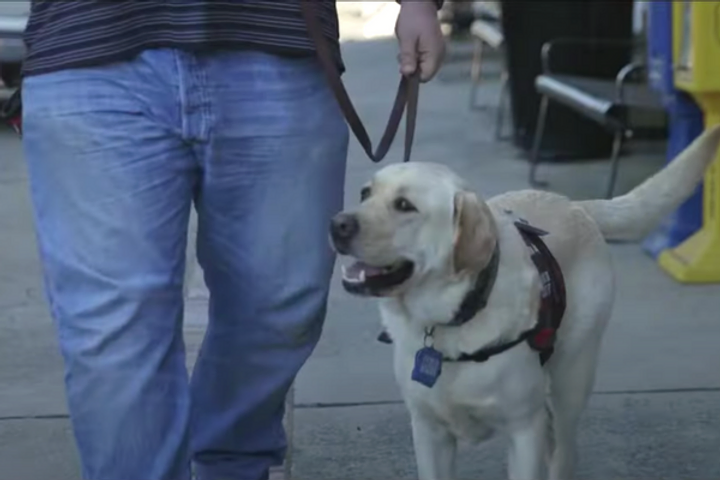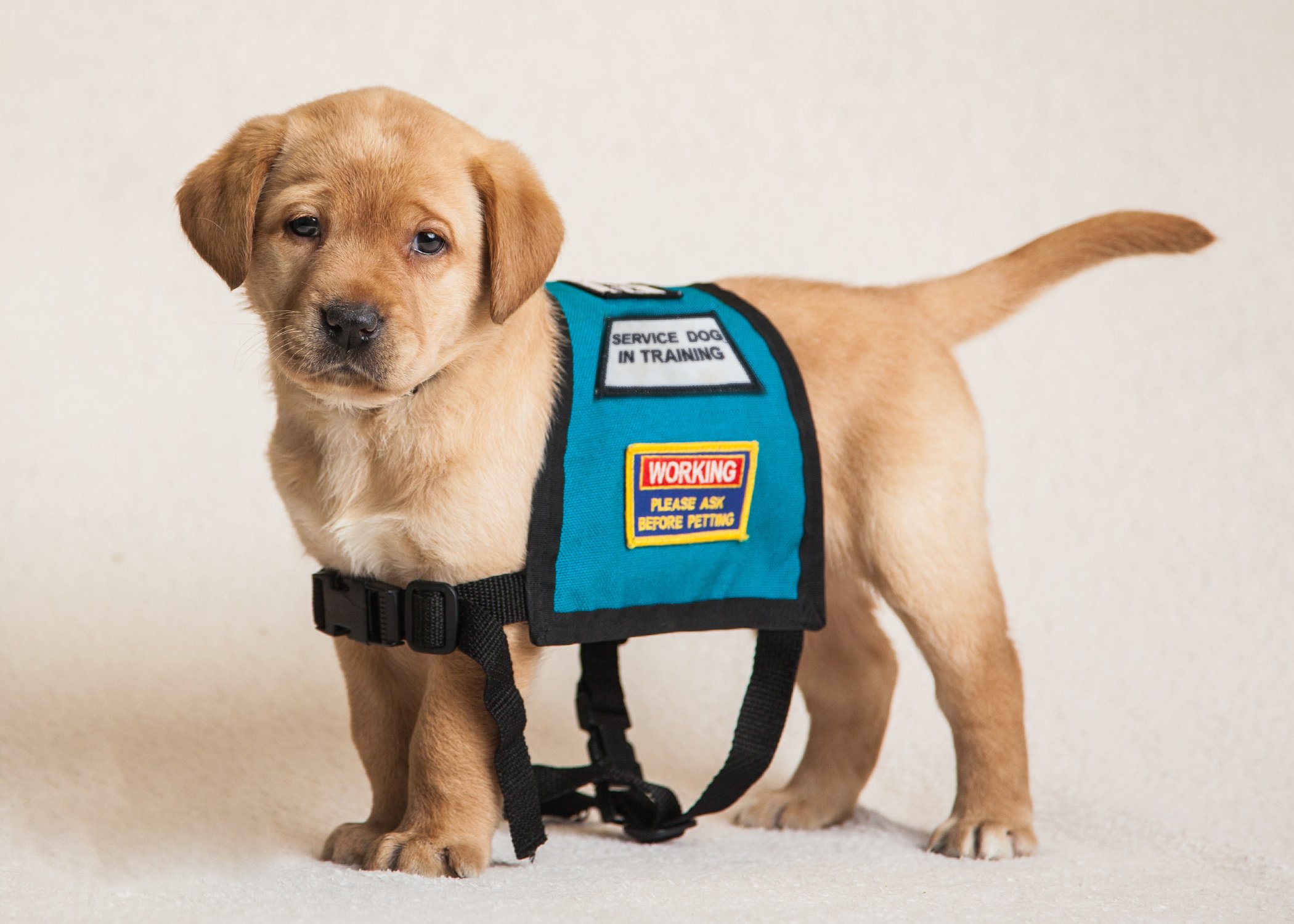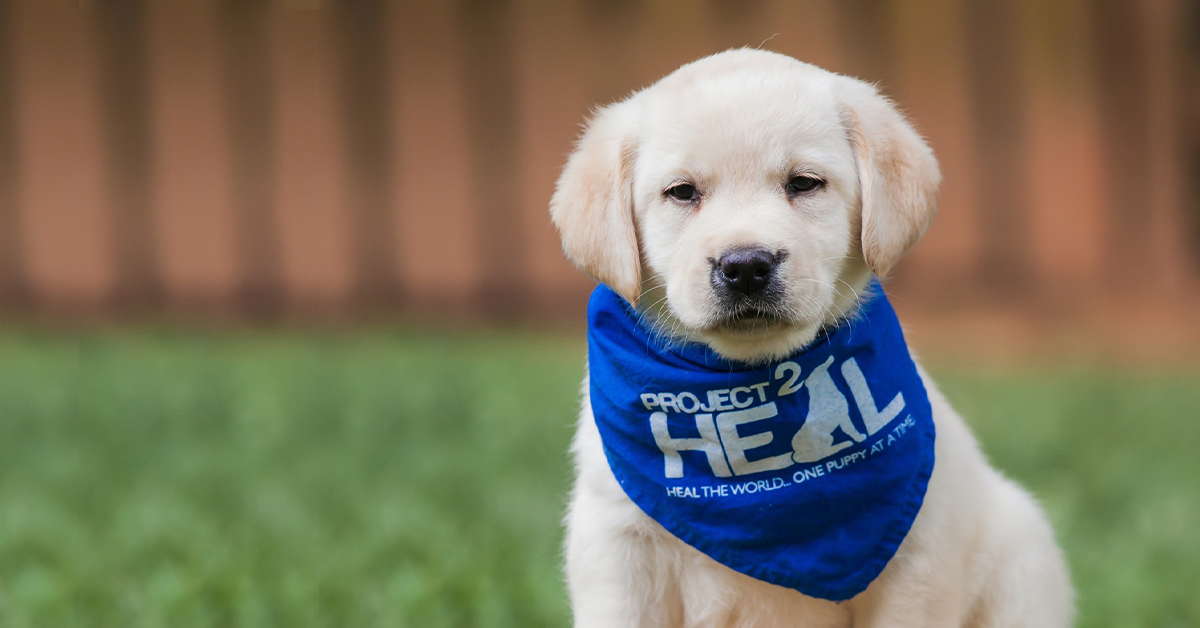
Project 2 Heal
If you’re a supporter of American veterans, you probably think a lot about how you can help heal a veteran with PTSD or physical disability—and for a good reason. Thousands of veteran soldiers return home from the battlefield each year, wounded either physically or mentally.
Along with any physical challenges resulting from injuries or loss of limb, many of them suffer from posttraumatic stress disorder (PTSD), including hypervigilance, night tremors, outbursts of anger, and heightened cortisol levels—too often leading to veteran suicide.
While there are many great ways to connect our nation’s heroes with housing, employment opportunities, and necessary medical care, did you know that a trained service dog actually qualifies as a recognized medical device? Furthermore, a recent study by Purdue University— the leading authority in the human-canine bond—found that a service dog can reduce each of the symptoms listed above, potentially saving veteran lives.
Proven Relief for Veteran PTSD
Many veterans return home unable to quickly resume the civilian life they once knew due to the complicated PTSD symptoms caused by combat trauma. In addition, anxiety and depression can often drive a veteran to isolate and seldom leave their home, which unfortunately further exacerbates the issue. Take the story of Brian McCrady, for example.
Brian is a retired Army medic whose life was dramatically altered in 2003 after falling 15 feet from a truck during a tour of Iraq. The accident left him with a terrible neurological movement disorder called dystonia, which causes abnormal posturing and curing in his spine.
Making matters worse, Brian also had severe PTSD, which caused him to withdraw from society even after returning home to live with his family. Like so many other veterans returning from combat with this condition, he began to isolate and would rarely leave the house.
Then, a monumental step for him happened. After learning about the impact a service dog had in the life of a friend, he decided to apply for one himself, resulting in a life-changing partnership with a Labrador Retriever named Chauncey.
“He’s given me back a voice that I had before in terms of advocacy, outreach, and doing things for other people.” Brian has stated. Most succinctly however, Brian says, “At first, I thought I was going to get better, and things would just go back to normal. It wasn’t until I received Chauncey that I realized I was just going to have a new me."
Bred, nurtured, and donated by Project 2 Heal, Chauncey was trained by Fidos for Freedom, a service dog training organization based in Laurel, Maryland. Brian’s partnership with Chauncey has been entirely transformational, allowing him to lose more than 50 pounds and quit using four different medications he was previously prescribed.
Helping Veterans Regain Independence

In addition to helping veterans gain freedom from crippling PTSD, these incredible dogs are well known for their impact in assisting many veterans to achieve independence from physical disability.
“I lost my right arm, and sometimes zippers can be pretty difficult,” said Captain Ryan Kules, USA, Ret. Along with his right arm, the explosion he survived during deployment in Iraq also took his left leg. In addition to extensive therapy to re-learn how to walk and write, his service dog Griff has been vital to his recovery.
“Griff can hold the bottom of the jacket for me while I zip it up. Some of the daily things you wouldn’t even think about it’s really beneficial. It’s something that helps me keep my body as good as it’s gonna be for as long as it’s gonna be. It’s a real comfort to know that he’s there to help me with that stuff.”
Like Brian McCrady’s service dog Chauncey, Griff was also donated to Fidos for Freedom by Project 2 Heal.
Helping Veterans Regain a Sense of Purpose
After years in military service, our veterans are mission-oriented individuals. So, it’s no wonder many veterans experience hypervigilance, extreme anxiety, and depression after returning from service because they have often spent years training to accomplish a highly specific mission. It requires constant vigilance, acute attention to surroundings, and a willingness to lay down one’s life to advance the mission or protect a fellow soldier.
While the horrors of war are certainly never missed, veteran soldiers often leave military service with a sense of duty so deeply ingrained that they feel devastating meaninglessness once they return to civilian life. In the case of veterans who have a physical disability or loss of a limb, this depression can be compounded by a literal sense of no longer being able to accomplish the same routine tasks they were once able to carry out.
“Knowing that I’m able to take care of my service dog, Griff, and I’m responsible for all of his needs, be it food or bathroom-ing or that kind of thing, gives me some more confidence to know that I’m responsible for him and he’s taking care of me. That I can still do that and still be responsible for something that really relies on me to take care of him, which is a confidence builder for me, being someone that was a little bit banged up.”
Helping to Reduce their Cost
The cost of training a service dog typically ranges from $25,000—$40,000. This is because most dog training organizations have no breeding program, typically leaving no choice but to train dogs taken from shelters. Unfortunately, an average of only 1 out of 12 shelter dogs becomes a successful service dog.
Project 2 Heal works to bridge this gap through the expert husbandry and nurturing of world-class Labrador retriever puppies, purpose-bred and donated to training organizations nationwide. Fidos for Freedom—our longest running partnership—has a 90% success rate with our puppies. By supporting the mission Project 2 Heal, you’re helping to increase the availability of quality puppies ready to be trained for service work, therefore reducing its cost to a veteran in need.
Helping to Reduce the Waiting Period
According to K9s for Warriors, the country's largest provider of service dogs to veterans, the wait to have one dog now ranges from two to four years. For a veteran struggling with such a condition, this is a very long time to wait for this treatment, proven to reduce depression, anxiety, and other symptoms. Through your support of Project 2 Heal, you're helping to reduce this lengthy waiting period and allow veterans to improve their mental health much more quickly.
Join the Fight Against Veteran PTSD
When you support our mission of increasing the availability of service dogs to veterans and others in need, you're directly helping to improve the mental health of veterans nationwide. The symptoms of this condition can have crippling effects on those who've bravely served our country. Your monthly donation of any amount is truly a contribution toward a cure—the proven PTSD treatment of a trained labrador retriever.












Post a comment